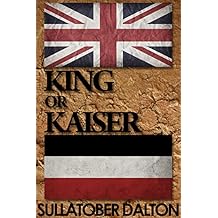Linda, in Pniel, showed me a book her father, Davids, had been given, or acquired about the history of his regiment. It was called simply The History of the Cape Corps and traced the origins of the involvement of the men of mixed race in the various struggles in South Africa, up to and including WW1. I must, unfortunately, summarise but the book followed the Cape Corps from South Africa to German East Africa, Tanganyika, and from there to Palestine and finally to police duties in the Middle East when demonstrations and strikes broke out. There were pages missing but I found a copy in the Cape Town archive and copied the pages for Linda to make her copy complete. One comment I remember from the East Africa campaign after some gruelling fighting and slogging it out among the heat and insects was a senior officer commenting that the only soldiers who could sing as they marched were the Cape Corps. I'll tell of what triggered them, but the two books, King or Kaiser and Shadows in the Veldt were to lead up to the creation of the Cape Corps and their WW1 experience. It's on the list, Linda. The picture shows the Pniel church with the grave of the predicant wwho whipped the drunkards in the foreground and the slave bell they erected to remind them of their heritage.
www.sullatoberdalton.com/books

